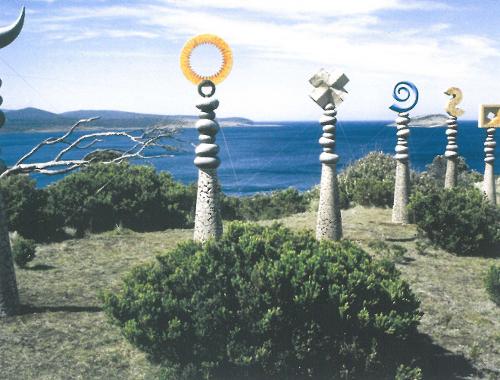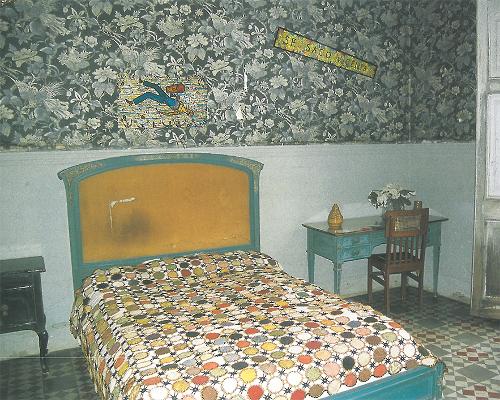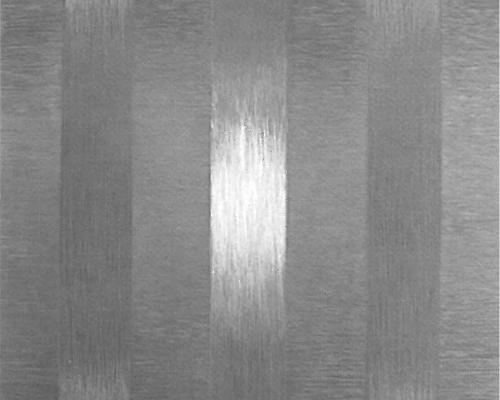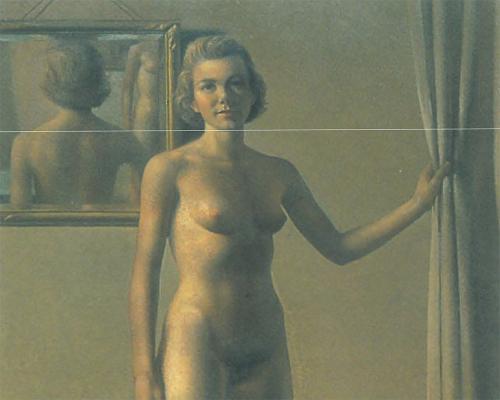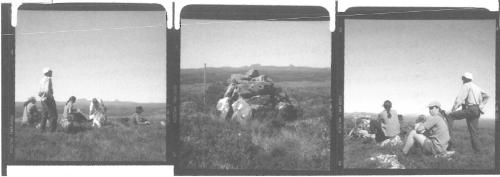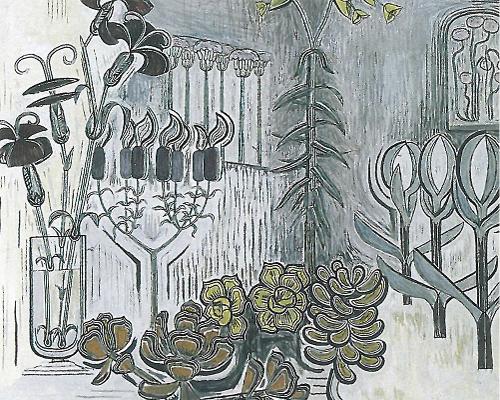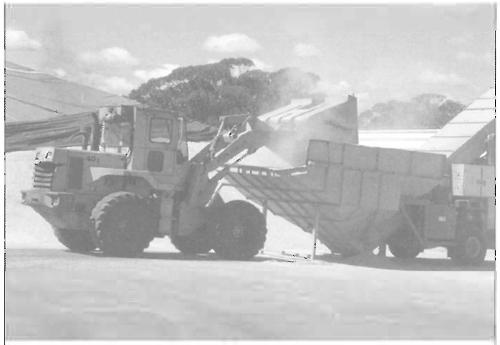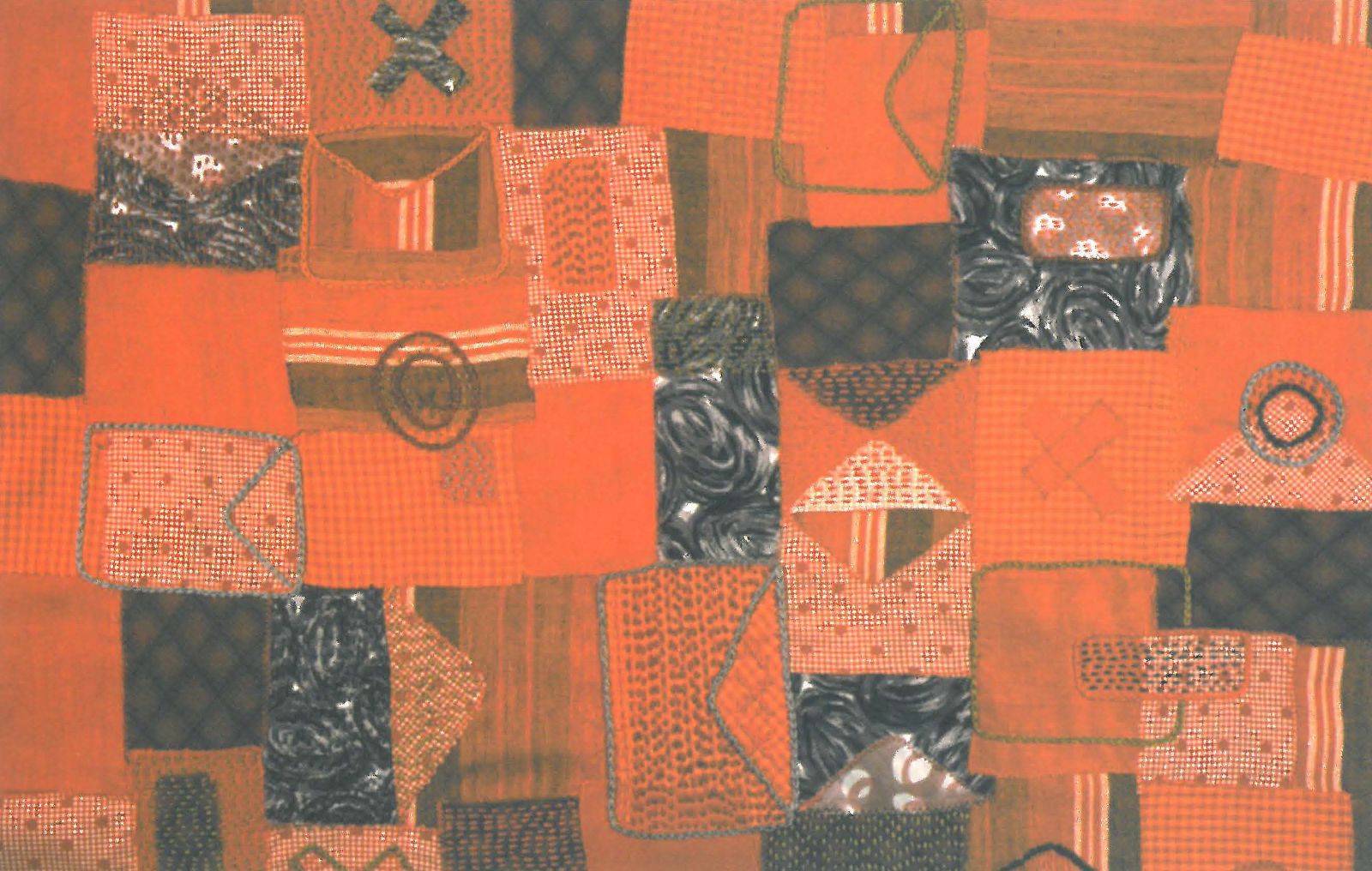
I work as a lecturer in printmaking at the Tasmanian School of Art, Hobart. My students and I visited the Versace exhibition at the National Gallery of Victoria's temporary site in early December as part of a 'Print Melbourne' experience and I was thinking of my commission for this review while we wandered through the exhibition. If I was looking for an entry point into a review of the quietly subtle, almost self effacing, Bias show which the Moonah Arts Center had hosted recently in suburban Hobart, it was going to be difficult. On the face of it, a connection to the extravagant Versace 'branding' paraded before us seemed remote.
Bias was an exhibition of contemporary embroidery made by seven women who regularly meet to work and talk and have done so for a number of years. Eliza Burke, Hermie Cornelisse, Karin Easton, Ruth Hadlow, Petra Meer, Rosemary O'Rourke and Margaret Woodward confirmed the collegial and intimate nature of their project by hosting a 'companion forum' which took place in the Moonah gallery space which had been transformed into 'everyone's' lounge. I was one of three males present in that 'chat' room of about 50 people. This interactive dimension to Bias is at the heart of the embroiderers' group and in the end was central to the core meaning of the show .
But back to Versace! Ostensibly the reason the NGV seemed to have gone for this show was the 'over the top' art quoting going on in the work. The high colour key of both fabrics and exhibition display foregrounded the popular culture context of the Versace machine. Images of Marilyn Monroe after Andy Warhol painstakingly embroidered into sleek jumpsuits signed and confirmed the coutouriers and by extension the Gallerie's 'hip' globalism. Its nowness and worldliness! Ironically for me the unexpected pleasure in the show was Versace's quoting of fashion history through references to greats such as the Frenchwoman Vionnet - 'the mistress of the bias cut'
This 'bias' word connection between the Melbourne and Moonah shows is coincidental. The obsessive embroidered surfaces in both shows were a more convenient link and the 'construction of woman through the designer man' is nicely at odds with women of the Embroidery Group constructing their own reality through fabric and material. There was a more profound concept, however, that united the shows and the key connection I was struggling to articulate as I wrote some notes flying back over the Tasmanian coast on my return home had to do with the 'pattern' word. Looking out over the patchwork of green hills, dark forested areas, red volcanic soil and harvester 'cut grass drawings' of the North West Coast I wrote in my diary : "The flow of pattern - the flow of motif and material - a sort of endlessness".
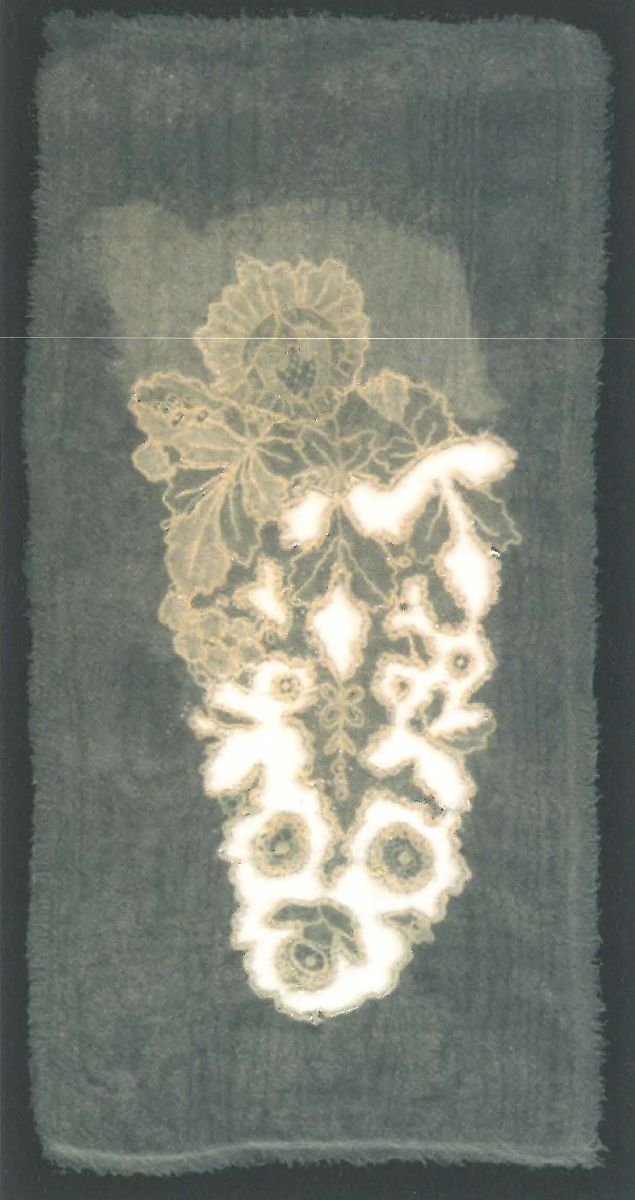
From the plane I could also see Osborne House, the bed and breakfast lodge in Burnie where Margaret Woodward and I had stayed on a recent round of School of Art interviews ( The plane was on an unusual low westerly track into Hobart). Having breakfast in that Victorian villa I was struck by the continuous nature of motif and material around me. The embroidered white tablecloth, the densely woven carpet, the plaster relief ceiling and particularly the delicate lace curtain all made for a particular gestalt - a continuous whole.
The doubling of the lace flower motifs of the curtain net into the large fleshy flowers on the rose bush in the garden released the flow to the horizon and confirmed the endlessness concept. It was this quality of pattern flow which conceptually united the Melbourne and Moonah shows for me. With Versace, the flow trades in animal and abstract prints as simulacra for moments in art and fashion history. With the Bias show the flow of embroidered signs and motifs chart nostalgic moments in the respective artists' personal but connected histories.
In the Introduction to his book The Sense of Order, E.H.Gombrich develops his ideas on pattern flow in biological terms - organisms relentlessly striving, struggling and moving. He goes on to project this activity into a concept of pattern maps and so from this rationale his complex tome unfolds. Tracking stumbles into pattern, pattern flows into decoration and figures flow into text. A perception of order flows into psychology and the flow is to 'the edge of chaos.' It is within this sense of consequential flow that I want to come to some reconciliation of the Bias show. Not that Bias exhibited such collapse or difficulty apart from Ruth Hadlow's descriptions of life in West Timor in her forum address. There were, however hints of anxieties that the fabric, cloth and thread failed to smother and silence completely.
In the show it was apparent to me that the embroidered surface was continuous and ordered through both the warp and weft of the net substructure and it is through the narrative thread that the psychological dimensions of the works were expressed. Ruth Hadlow's comment in her artist's statement that she always thinks of red thread as blood encourages the flow of anthropomorphic meaning from her material. Rosemary O'Rourke's use of salt as a filler for her delicate embroideries conjures up the taste of a lover's skin at the same time as it 'beds' the vulnerable and inconsequential embroidered form in the fantasy world of the mind. The material flow into melancholy was evident in the works of Margaret Woodward and Petra Meers where the past was sentimentally conjured up through references to personal histories. The feeling of loss was compounded and felt all the more keenly by the 'dumbness' of the stitch. The experimental blanket of Karin Easton and Hermie Cornelisse's D'oyleys directed our perceptual flow into the domestic arena which was at once a comforting but potentially claustrophobic move. Eliza Burke's books of female body parts brought me right back into the matriarchal den of the Bias forum and my initial comment that this action was at the heart of the show.
Every Tuesday night for nine years these women have worked on their embroideries, watched how another has handled the material and talked about their days. It is in this fine delineation of personal anecdote through shared work that the Bias show succeeds - through its flow of the thread and the 'girl' tribal.


